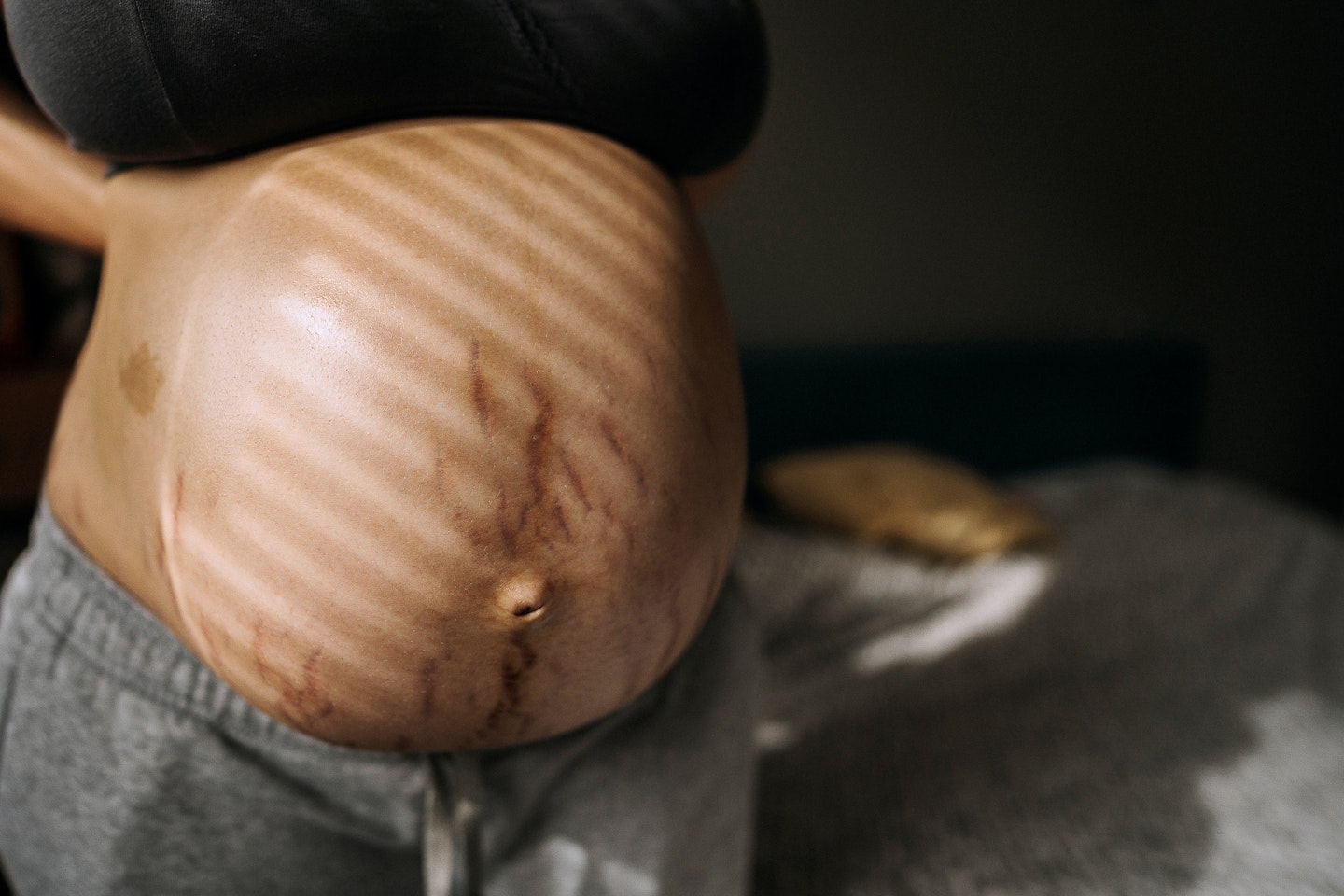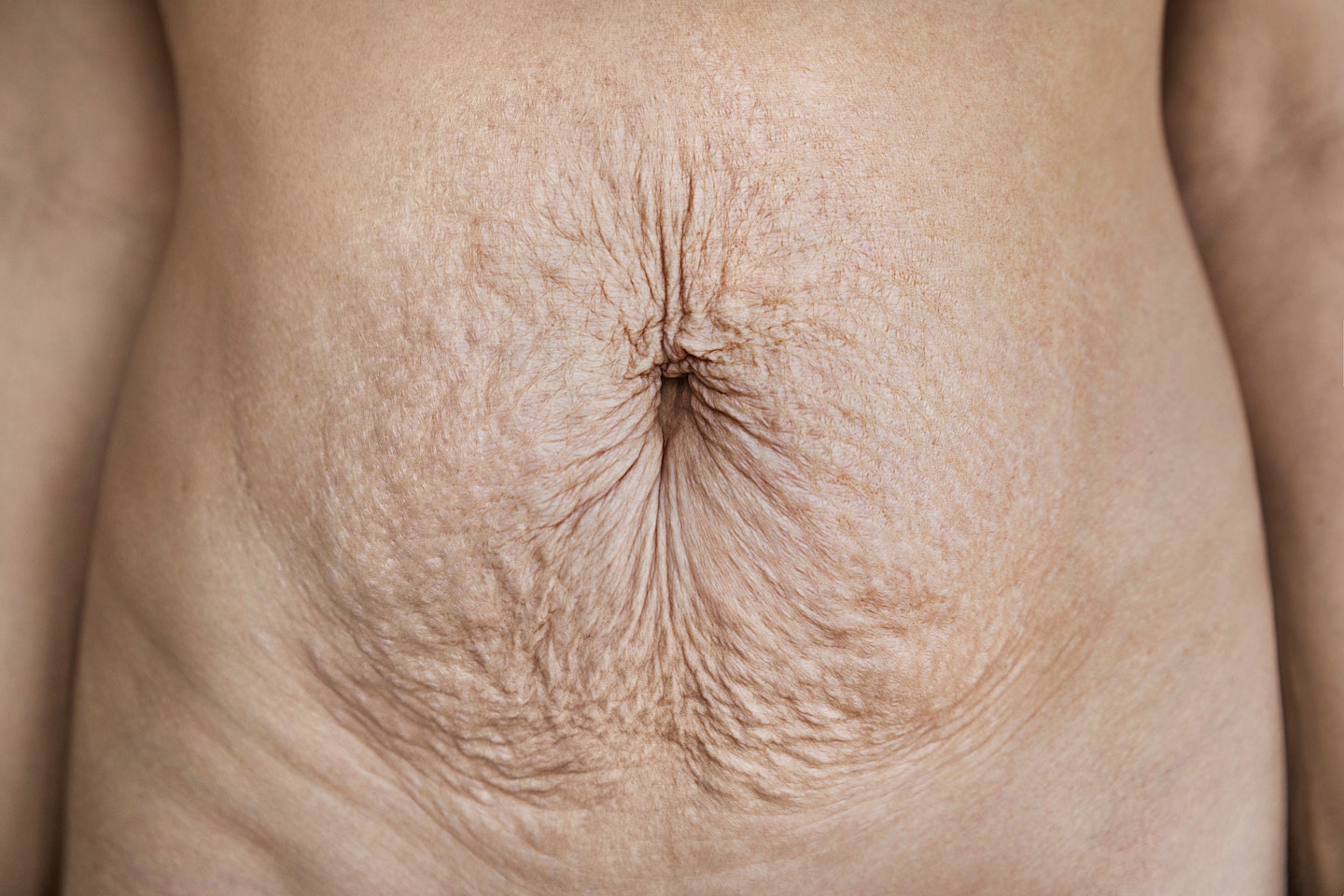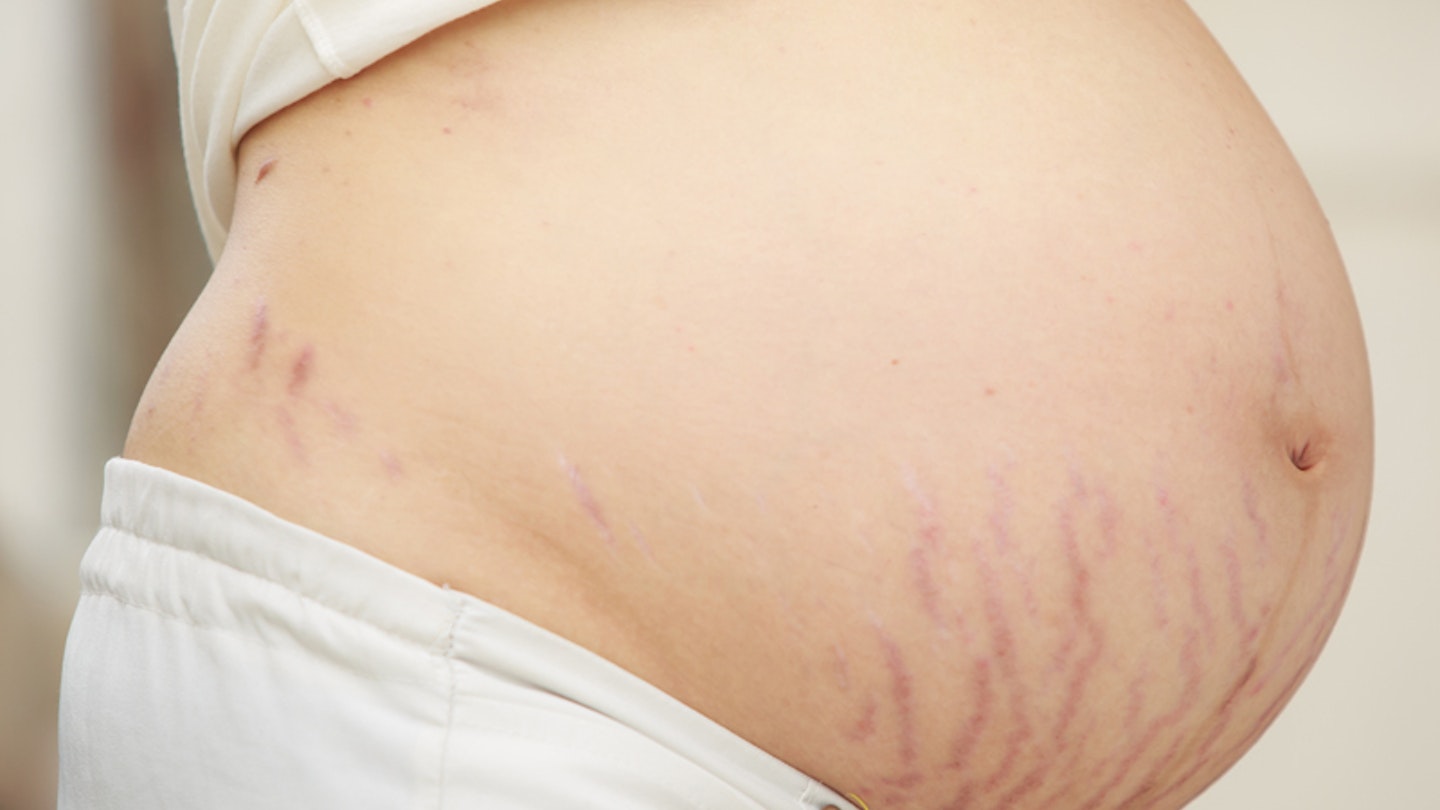Stretch marks in pregnancy are very common, with 8 out of 10women getting them, but it's something that can affect all women during their lifetime. Stretch marks are narrow, streaky lines that appear on the surface of your skin and depending on your skins colour, will determine the colour of your stretch marks.
Over the years, women have been made to feel that they should hide their stretch marks and that they're something to be self-conscious of, as they don't conform to society's 'beauty standards'. Thankfully, this has changed in recent years, as we all know stretch marks are completely normal and a beautiful part of a woman's body.
We spoke to Dr Anjali Mahto, a consultant dermatologist to answer all your questions regarding stretch marks in pregnancy.
What are stretchmarks?

Stretch marks are streaky lines that appear on your skin and are usually pink, brown, purple or red in colour, depending on the colour and tone of your skin. The medical term for them is 'striae gravidarum', which is Latin for stripes of pregnancy.
‘When the stretch marks first appear, the lesions can be pink, red or purple in colour,’ says consultant dermatologist Dr Anjali Mahto. ‘The skin can also be raised and itchy while they develop.’ Lines form perpendicular to the direction that the skin is stretched in. Over time, these will fade to become white, shiny streaks, resembling scars.
When do stretch marks appear in pregnancy?
This will differ from person to person. However, it's most common for stretch marks to appear later in pregnancy as the skin stretches from your baby growing and you gaining more weight. You may get them in your second trimester, for others it can be the third trimester and some women just don't get them at all. Remember, stretch marks are nothing to be ashamed of, they're beautiful, completely normal and are part of your body changing.
How do stretch marks appear in pregnancy?
Your skin can be divided into three main levels: the epidermis (outermost layer), the dermis and the subcutis (innermost layer).
It’s like trying to build an extension for a new lodger without using any new bricks
‘Stretch marks are caused by scarring that occurs in the dermis when it is stretched,’ explains Dr Anjali. During pregnancy, your skin becomes increasingly taut as your uterus expands to make space for your growing baby. But it’s like trying to build an extension for a new lodger without using any new bricks.
A rapid period of expansion disrupts the collagen and elastic fibres in your dermis, resulting in decreased strength and elasticity. This connective tissue is stretched to breaking point. ‘When this happens,’ explains Dr Anjali, ‘you can start to see deeper layers of your skin’s connective tissue through the gaps. This is what we call a stretch mark.’ They're not to be confused with the linea nigra which is a dark brown line that will fade after pregnancy.
It’s also thought that during pregnancy, increases in hormones such as glucocorticoids suppress the production of collagen. This means that our bodies can’t repair broken connective tissue as well as they would otherwise.
Where do stretch marks form?

Stretch marks don’t just affect pregnant women. ‘I see a lot of teenage boys who have suddenly shot up in height and have stretch marks around their thighs,’ says Dr Anjali. ‘People who start to workout intensively can get them around their biceps, and individuals who have put on a lot of weight quickly are susceptible too.’ So you can expect to see them wherever there’s a rapid expansion.
During pregnancy, the most common area for stretch marks to occur is across the abdomen, but you may also notice them on your breasts as they swell in preparation for breastfeeding your baby. And, if you put on some baby weight, you may find them on your bottom, hips and thighs, most commonly during the second and third trimesters.
Am I likely to get stretch marks?
‘Some pregnant women may be more at risk of developing stretch marks than others, as family and personal history play their part,’ explains Dr Anjali.
So if you have previously had stretch marks on your breasts or thighs, or the women in your family have been prone to them, the chances are that you might get them while pregnant too.
Other factors that mean you might be more prone include being overweight before becoming pregnant, being a young mum, drinking too much alcohol, or even the colour of your skin. ‘Some studies suggest that women with lighter-coloured skin get them more,’ explains Dr Anjali.
The size of your baby plays a part too. Carrying a baby at what studies refer to as ‘an increased gestational age’ (let’s just say ‘big’), or having a baby who is particularly heavy, tall or has a large head circumference, have all been identified as potential risk factors for developing stretch marks.
Can I prevent stretch marks?
Just like with skin tags in pregnancy, stretch marks are not something that can be removed. However, some studies indicate that gaining weight during pregnancy, not drinking enough water or having low vitamin C levels all increase the risk. While none of the studies are wholly conclusive, eating healthily, exercising steadily and keeping hydrated may help.
‘There is some evidence to support massaging bitter almond oil into your skin during pregnancy,’ Dr Anjali adds. One study found women who massaged the oil into their skin for 15 minutes every other day between 19 and 32 weeks of pregnancy, and every day thereafter until delivery, had 20 per cent fewer stretch marks. Those who did get stretch marks, got them less severely.
Two small studies suggest that creams containing hyaluronic acid may be preventative, while topical application of tretinoin (a vitamin A derivative) can decrease the severity. ‘However, tretinoin is a pregnancy C category drug, meaning it can’t be used during pregnancy or while breastfeeding, so its usefulness is limited,’ cautions Dr Anjali.
Two of the most commonly used products – cocoa butter and olive oil – have been shown in studies to be no more effective than a placebo.
Can stretch marks be removed?
Various cosmetic treatments exist and have some success, but are only available privately. Micro-needling makes lots of little holes in the skin to encourage collagen production. In pulsed dye laser therapy, the energy from a laser is absorbed by the blood vessels underneath your stretch marks, causing them to collapse and fade or turn white. Fractional thermolysis also targets damaged areas with a laser. ‘The trouble is,’ says Dr Anjali, ‘that studies into stretch marks treatments are scarce, so picking one is an expensive game of hit and miss.’
Over-the-counter options can be cheaper. ‘There is some evidence that creams containing centella may help,’ says Dr Anjali. Extract from this South Asian plant accelerates healing and lessens the appearance of scars.
But the best solution is to learn to love your stretch marks, and the story they tell. ‘I treat patients every day,’ says Dr Anjali, ‘and almost everyone, men or women, pregnant or not, has stretch marks somewhere, I promise.’
